
Copernical Team
Exploring the Rubin Observatory's giant data acquisition system
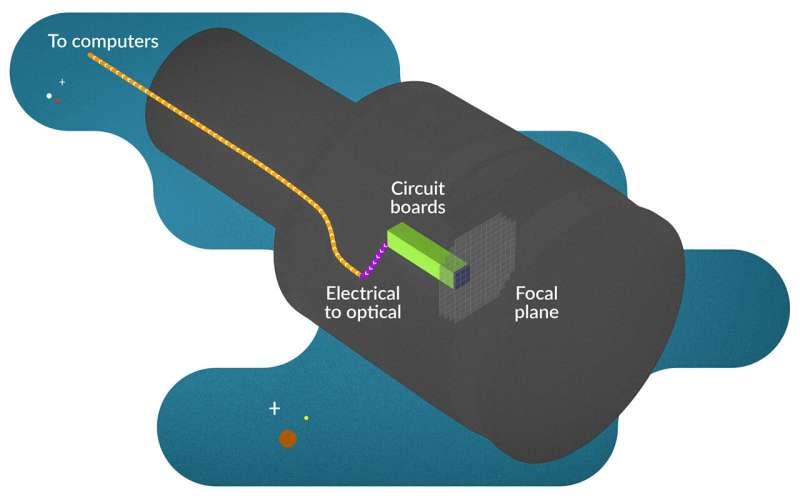
When the Vera C. Rubin Observatory starts taking pictures of the night sky in a few years, its centerpiece 3,200 megapixel Legacy Survey of Space and Time camera will produce an enormous trove of data valuable to everyone from cosmologists to the people who track asteroids that might collide with Earth.
You may already have read about how the Rubin Observatory's Simonyi Survey Telescope will gather light from the universe and shine it on the Department of Energy's LSST Camera, how researchers will manage the data that comes from the camera, and the myriad things they'll try to learn about the universe around us.
What you probably haven't read about is how researchers will get that mountain of incredibly detailed images off the back of the world's largest digital camera, down fiber optic cables and into the computers that will send them off Cerro Pachón in Chile and out into the world.
Gregg Thayer, a scientist at the U.S. Department of Energy's SLAC National Accelerator Laboratory, is the person in charge of Rubin's data acquisition system, which handles this essential process.
What would a sustainable space environment look like?

October 4, 2022, will be an auspicious day as humanity celebrates the 65th anniversary of the beginning of the Space Age. It all began in 1957 with the launch of the Soviet satellite Sputnik-1, the first artificial satellite ever sent to orbit. Since that time, about 8,900 satellites have been launched from more than 40 countries worldwide. This has led to growing concerns about space debris and the hazard it represents to future constellations, spacecraft, and even habitats in low Earth orbit (LEO).
This has led to many proposed solutions for cleaning up "space junk," as well as satellite designs that would allow them to deorbit and burn up. Alas, there are still questions about whether a planet surrounded by mega-constellations is sustainable over the long term. A recent study by James A. Blake, a research fellow with the University of Warwick, examined the evolution of the debris environment in LEO and assessed if future space operations can be conducted sustainably.
For his Ph.D. project, Blake focused on the imaging and tracking of space debris in geosynchronous Earth orbits (GEOs) around 36,000 km (22,370 mi) above the equator.
Ukraine war: How it could play out in space, with potentially dangerous consequences
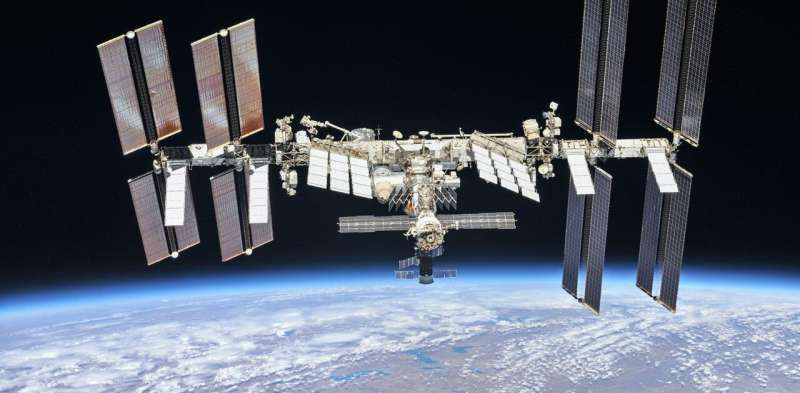
Nearly three decades of close collaboration in space between Russia and the western world seems to be coming to an end. With increasing tensions over Vladimir Putin's invasion of Ukraine, Russia has arguably threatened to crash the International Space Station and refuse to launch satellites for western countries. A few months ago, Russia blew up one of its own defunct satellites, creating space junk that threatened the safety of astronauts at the ISS.
So how is the war likely to impact on operations in space going forward, and what are the consequences?
Aggression in space could directly affect boots on the grounds. Imagery from space has become a regular feature in coverage of the invasion of Ukraine, showing long columns of armor moving inexorably towards Kyiv or Kharkiv.
While chilling in its content, it has offered a boost to the embattled Ukrainian resistance by helping it work out where the enemy is, where it is coming from and how it is configured.
Backbone of Hera asteroid mission for planetary defense
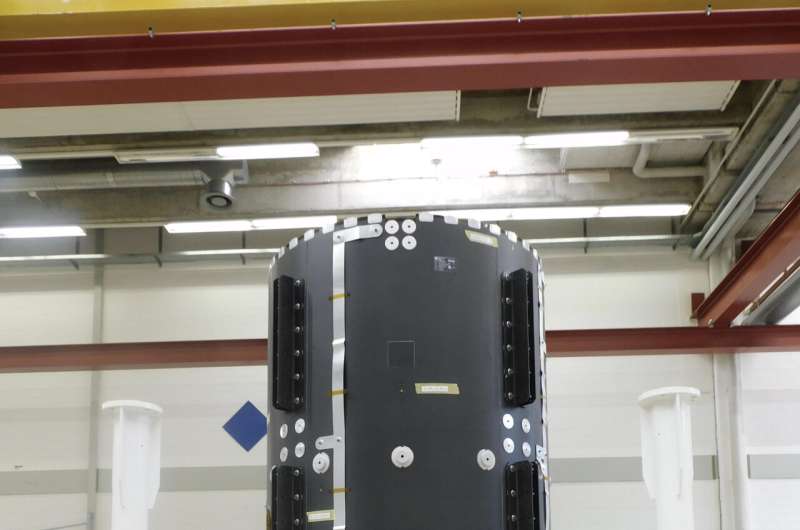
In a Swiss cleanroom, this historic object has been taking shape. Made of carbon fiber reinforced polymer, this is the central core of ESA's Hera asteroid mission for planetary defense.
NASA's DART spacecraft is currently on its way to the Didymos asteroid pair in deep space, to test the kinetic impact technique of asteroid deflection on the smaller of the two bodies on 26 September this year.
Hera will fly to the same asteroid system in the aftermath of the impact to perform a close-up "crime scene investigation," including close-up mapping of DART's crater and assessing the asteroid's make-up and internal structure.
The stiff, strong core serves as a backbone to the spacecraft, built for ESA by a team from RUAG Space in Switzerland and OHB in the Czech Republic. Once current "static load" testing confirms its performance, the core will be shipped to OHB in Germany to assemble the spacecraft's primary structure around it.
It will then be passed on to Avio in Italy to integrate its propulsion module. The bottom aluminum cone includes the Launcher Interface Ring, providing all necessary connections with the launcher.
Imagining an Earthly neighbor

We do not yet know whether the sun-like stars closest to us, the α Centauri A/B binary, harbor an Earth-like planet. However, thanks to new modeling work, we now have a good sense of what such a planet, should it exist, would look like and how it might have evolved.
These are exciting times for exoplanet research, moving from demography towards detailed characterization. The James Webb Space Telescope (JWST), successfully launched in December 2021, is projected to detect the atmospheres of rocky exoplanets transiting in front of M dwarfs—stars that are fainter than the sun—orbiting within the habitable zone. The Extremely Large Telescope (ELT), currently under construction in Chile, will be set up to directly image rocky exoplanets around nearby sun-like stars by the end of the decade. Looking even further ahead, ambitious future space mission concepts are currently being explored, including the Large Interferometer for Exoplanets (LIFE), which targets habitable-zone rocky exoplanets and their atmospheres.
ETH Zurich is leading or significantly involved in these and other observational infrastructures. Complementary research at the Institute for Particle Physics and Astrophysics in the Department of Physics concerns numerical modeling, which is indispensable for understanding habitable-zone rocky exoplanets and in guiding the future observations and instrumentation development.
IMPERIAL: 3D printing’s new dimension
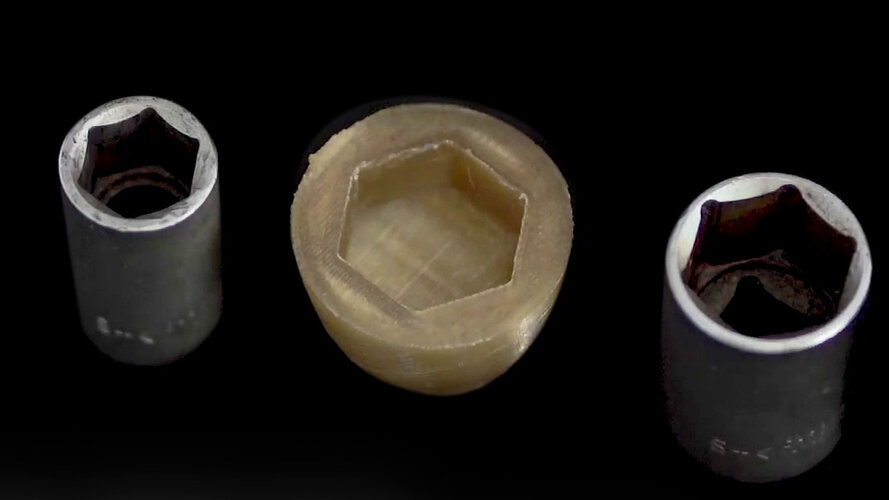 Video:
00:02:30
Video:
00:02:30
ESA’s new IMPERIAL 3D printer can print parts much larger than itself, overcoming one of the main constraints of the process – limited build volume.
What is also known as ‘Additive manufacturing’ is an essential enabling technology for deep space crewed missions. Accordingly this printer has been specially designed with ‘out-of-Earth’ manufacturing in mind, enabling future space explorers to produce structures, tools and spare parts as needed. Built to operate in weightlessness – meaning it can work upside down on Earth – the printer is capable of printing high performance polymer parts of unlimited dimensions along a single direction.
The long goodbye
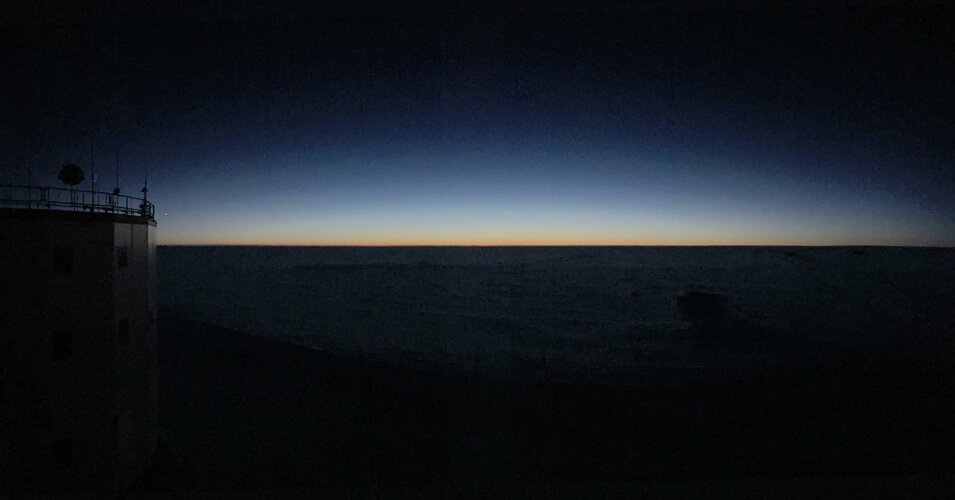 Image:
The long goodbye
Image:
The long goodbye Backbone of Hera asteroid mission
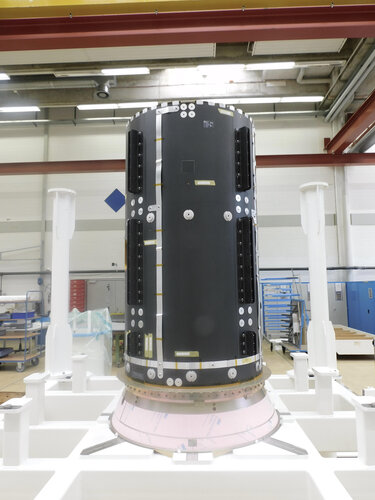 Image:
Backbone of Hera asteroid mission
Image:
Backbone of Hera asteroid mission Expedition to highest active volcano unearths clues about life on other worlds
 A harsh sun shines down through a cloudless sky, across a vast and unforgiving landscape. It's covered in gray rock, giant ice sculptures and expansive fields of spiky, yellow and orange bushes. In the distance, intimidating mountain peaks dominate the desolate scene, many miles from the nearest town. Yet alpacas roam freely and flamingos seek out scarce water, both unexpected sights in this wil
A harsh sun shines down through a cloudless sky, across a vast and unforgiving landscape. It's covered in gray rock, giant ice sculptures and expansive fields of spiky, yellow and orange bushes. In the distance, intimidating mountain peaks dominate the desolate scene, many miles from the nearest town. Yet alpacas roam freely and flamingos seek out scarce water, both unexpected sights in this wil MDA to provide satellite imagery for international efforts in UKRAINE
 MDA Ltd. issued the following statement regarding the ongoing situation in Ukraine: "As organizations around the globe come together in a spirit of cooperation and collaboration to support efforts to restore peace, MDA has secured special authorization from the Government of Canada to collect Synthetic Aperture Radar (SAR) satellite imagery over restricted areas in Ukraine.
Images captured
MDA Ltd. issued the following statement regarding the ongoing situation in Ukraine: "As organizations around the globe come together in a spirit of cooperation and collaboration to support efforts to restore peace, MDA has secured special authorization from the Government of Canada to collect Synthetic Aperture Radar (SAR) satellite imagery over restricted areas in Ukraine.
Images captured 